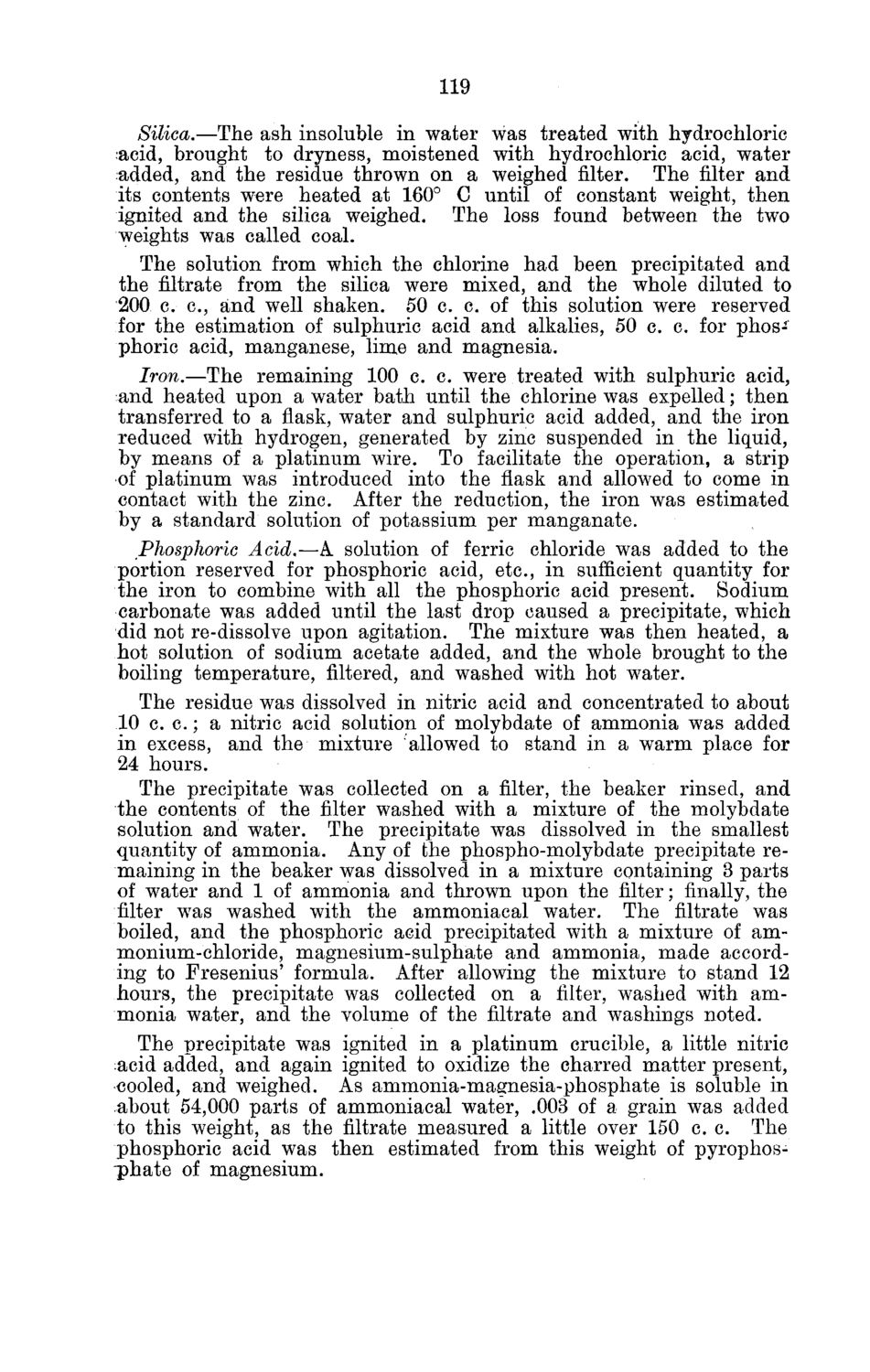| |
| |
Caption: Board of Trustees Minutes - 1880
This is a reduced-resolution page image for fast online browsing.

EXTRACTED TEXT FROM PAGE:
119 Silica.—The ash insoluble in water was treated with hydrochloric acid, brought to dryness, moistened with hydrochloric acid, water added, and the residue thrown on a weighed filter. The filter and its contents were heated at 160° C until of constant weight, then ignited and the silica weighed. The loss found between the two weights was called coal. The solution from which the chlorine had been precipitated and the nitrate from the silica were mixed, and the whole diluted to 200 c. c , and well shaken. 50 c. c. of this solution were reserved for the estimation of sulphuric acid and alkalies, 50 c. c. for phosphoric acid, manganese, lime and magnesia. Iron.—The remaining 100 c. c. were treated with sulphuric acid, and heated upon a water bath until the chlorine was expelled; then transferred to a flask, water and sulphuric acid added, and the iron reduced with hydrogen, generated by zinc suspended in the liquid, by means of a platinum wire. To facilitate the operation, a strip of platinum was introduced into the flask and allowed to come in contact with the zinc. After the reduction, the iron was estimated by a standard solution of potassium per manganate. Phosphoric Acid.—A solution of ferric chloride was added to the portion reserved for phosphoric acid, etc., in sufficient quantity for the iron to combine with all the phosphoric acid present. Sodium carbonate was added until the last drop caused a precipitate, which did not re-dissolve upon agitation. The mixture was then heated, a hot solution of sodium acetate added, and the whole brought to the boiling temperature, filtered, and washed with hot water. The residue was dissolved in nitric acid and concentrated to about 10 c. c.; a nitric acid solution of molybdate of ammonia was added in excess, and the mixture allowed to stand in a warm place for 24 hours. The precipitate was collected on a filter, the beaker rinsed, and the contents of the filter washed with a mixture of the molybdate solution and water. The precipitate was dissolved in the smallest quantity of ammonia. Any of the phospho-molybdate precipitate remaining in the beaker was dissolved in a mixture containing 3 parts of water and 1 of ammonia and thrown upon the filter; finally, the filter was washed with the ammoniacal water. The filtrate was boiled, and the phosphoric acid precipitated with a mixture of ammonium-chloride, magnesium-sulphate and ammonia, made according to Fresenius' formula. After allowing the mixture to stand 12 hours, the precipitate was collected on a filter, washed with ammonia water, and the volume of the filtrate and washings noted. The precipitate was ignited in a platinum crucible, a little nitric acid added, and again ignited to oxidize the charred matter present, cooled, and weighed. As ammonia-magnesia-phosphate is soluble in about 54,000 parts of ammoniacal water, .003 of a grain was added to this weight, as the filtrate measured a little over 150 c. c. The phosphoric acid was then estimated from this weight of pyrophosphate of magnesium.
| |